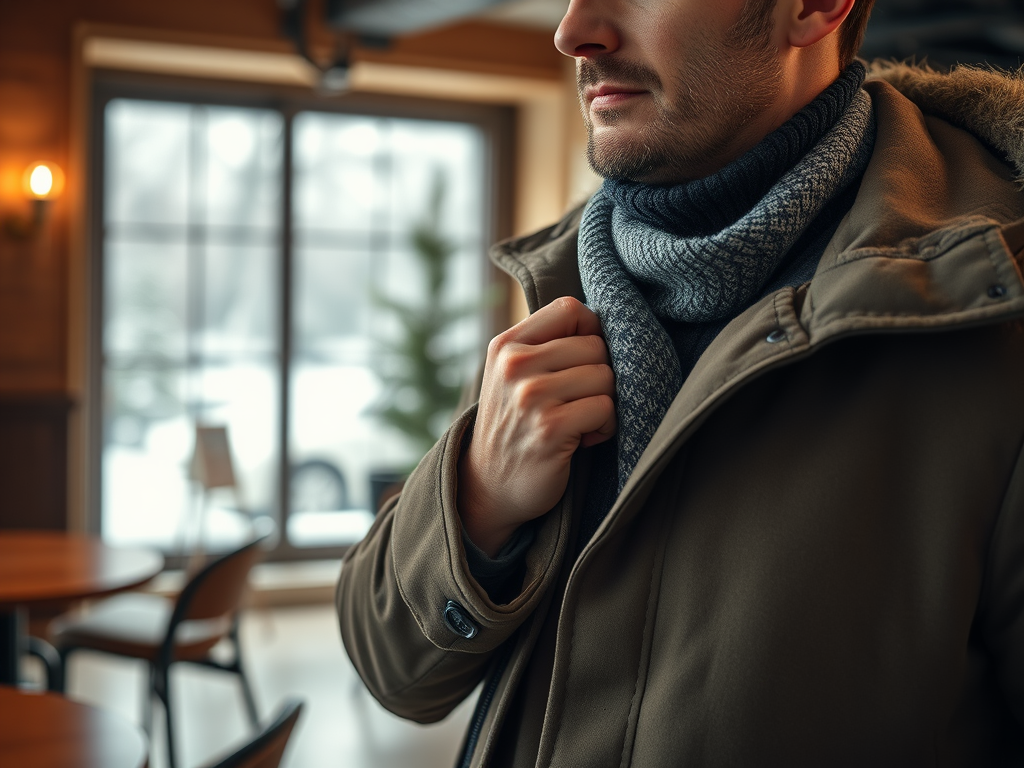Layering Techniques: How to Master Winter Outerwear for Men
Winter is a season that brings its own unique challenges, especially when it comes to outerwear. While the holidays might fill our hearts with joy, the biting cold has a way of reminding us to stay warm. Layering offers a smart solution to combat this chill while also making sure you look good doing it. The art of layering not only enhances your comfort but allows for greater versatility in your wardrobe. In this article, we’ll explore the essentials of mastering winter layering, drawing on techniques and tips that will elevate your winter style game. You’ll find that layering is more than just practical; it’s an opportunity to express your individual style during those frosty months.
Understanding the Importance of Layering

Layering is essential for staying warm and stylish in winter. It provides the versatility needed to adjust to fluctuating temperatures throughout the day. Whether you’re commuting to work, hitting the slopes, or enjoying a winter stroll, having the right layers will help you adapt to your surroundings. Plus, layering allows you to easily shed or add clothing depending on activity levels, preventing overheating or freezing. Ultimately, this technique can completely transform your winter experience. So, let’s dive into the basics of effective layering to ensure you’re prepared for whatever winter throws at you.
The Basics of Layering

What is the Layering Principle?
The layering principle consists of three components: the base layer, the middle layer, and the outer layer. Each plays a vital role in regulating body temperature and protecting against the elements. To gain a clearer understanding, observe the purpose of each layer:
- Base Layer: Keeps moisture away from your skin.
- Middle Layer: Provides insulation and warmth.
- Outer Layer: Shields you from wind and precipitation.
Choosing the Right Fabrics
Different fabrics have various properties, influencing warmth, breathability, and moisture-wicking. Understanding the best materials for each layer can make a significant difference. For instance, natural fibers, like merino wool, are excellent for moisture management and temperature regulation. In contrast, synthetic materials can often dry faster and are sometimes less expensive. It’s also essential to consider the fabric’s weight and thermal efficiency when making choices. Remember, the right fabric can elevate your layering game and ensure maximum comfort throughout the winter months.
The Three Layers Explained
Base Layer
The base layer is your first line of defense against the cold. Its primary function is to wick moisture away from the body, ensuring you remain dry and comfortable. Typical materials include:
- Merino wool
- Synthetic blends
- Silk
When selecting a base layer, it should fit snugly against your skin without restricting movement. Aim for a blend that will keep you warm in chilly conditions yet isn’t too bulky. This layer is crucial because it helps you maintain a consistent body temperature, a key factor in staying comfortable during cold outings.
Middle Layer
Next up is the middle layer, which serves as your insulation. Think fleece pullovers, down jackets, or occasional wool sweaters. The thickness of this layer can significantly affect your warmth without compromising style. Based on your planned activity, you may want to choose:
| Layer Type | Pros | Cons |
| Fleece | Lightweight, breathable | May not provide enough warmth in extreme cold |
| Down Jackets | Excellent insulation | Can be heavy, difficult to pack |
| Wool Sweaters | Natural, stylish | Can be itchy for some |
Outer Layer
The outer layer is your shield against the wind, rain, and snow. It’s crucial for keeping the elements at bay to maintain your warmth. Look for waterproof or water-resistant materials, such as:
- Nylon
- Polyester
- Gore-Tex
Features like breathability and ventilation are also important to prevent sweat build-up while you’re active. Pairing a high-quality outer layer with effective inner layers can mean the difference between a fun day in the snow and shivering in discomfort.
Tips for Effective Layering
Balancing Function and Style
Layering doesn’t have to sacrifice style. In fact, it creates an excellent opportunity for making fashion statements. Choose pieces that work well together in terms of color, fit, and design. Solid colors can be paired with patterns, or you can create a monochromatic look with varying shades. Additionally, don’t forget accessorizing; hats, scarves, and gloves can not only provide extra warmth but also enhance your overall style. A well-thought-out ensemble will keep you feeling confident and comfortable.
Layering for Different Activities
Consider the specific needs for various activities, from casual outings to winter sports. If you’re planning a hike, for instance, consider a lighter outer layer that allows for ease of movement. Alternatively, if you’re grabbing drinks with friends, you may prefer a more fashionable option that does not compromise warmth. To simplify your options, here’s a quick guide:
- Casual Outings: Stylish jackets with a neat base layer
- Sports Activities: Functional materials that allow freedom of movement
- Commute: Versatile layers that can adapt to indoor heating
Conclusion
Mastering the art of layering for winter outerwear not only keeps you warmer but also allows for more versatility in your wardrobe. By understanding the principles of effective layering and selecting the right materials, men can confidently tackle the colder months while looking stylish. Remember that a successful layering strategy combines function with your personal style. As you invest in your winter wardrobe, keep in mind the benefits of quality fabrics and well-chosen layers, enabling you to enjoy the beauty of winter to the fullest.
Frequently Asked Questions
- What should I wear as a base layer for winter?
- Look for moisture-wicking materials like synthetic fabrics or merino wool.
- Is it necessary to have a middle layer?
- Yes, a middle layer provides insulation and warmth essential for colder climates.
- What type of outer layer is best for very cold weather?
- A waterproof down jacket or a parka with insulation is ideal for extreme cold.
- Can I mix different fabrics when layering?
- Absolutely! Just ensure each layer serves its purpose, such as moisture management, insulation, or protection against weather elements.
- How do I choose the right size for layering?
- Aim for a snug fit for the base layer, while the middle and outer layers should allow for movement without being too tight.
